Most people have no idea how many different types of chickens there are globally. Each type of chicken is a unique species bred for different reasons and purposes. Some are bred for meat, others for egg production, and others for show. This article looks at several types of chickens, including a brief physical description, their origin, and what they are bred for. Please note that this is not an exhaustive list but a sampling of various species.
From city backyards to rural farms, deciding on the perfect chicken breed is exciting. To simplify this process, we have developed a comprehensive guide that will help you choose between different types of chickens based on their characteristics and purposes. Herein lies information regarding various categories of these birds as well as factors to consider when finding your desired breed, so join us now in exploring the wide world of chicken breeds!
Choosing the best chicken breed for your backyard coop or farm is crucial. We will introduce twenty top-notch breeds, each offering distinct traits and advantages. Rhode Island Red and Leghorn chickens are renowned for egg production, while Cornish Crosses may satisfy those needing meat birds. You can find a suitable bird that meets all your needs with this vast range that covers various colors, sizes, personalities, and even dual purposes!
No matter what you’re looking to get out of these fowls – friendly companion? Unwavering egg layer? Heavyweight producer?– there’s sure to be an ideal choice available. Let’s examine each one closely to learn why they are so popular among poultry owners today.
Farmers worldwide have noted that having the correct kind of chicken breed greatly impacts any farming venture. Whether it comes down to generating eggs or providing food from efficient meat producers. So picking right helps optimize productivity significantly – something every individual setting up shop wants!
The Best Chicken Breeds
1. Rhode Island Red Chicken
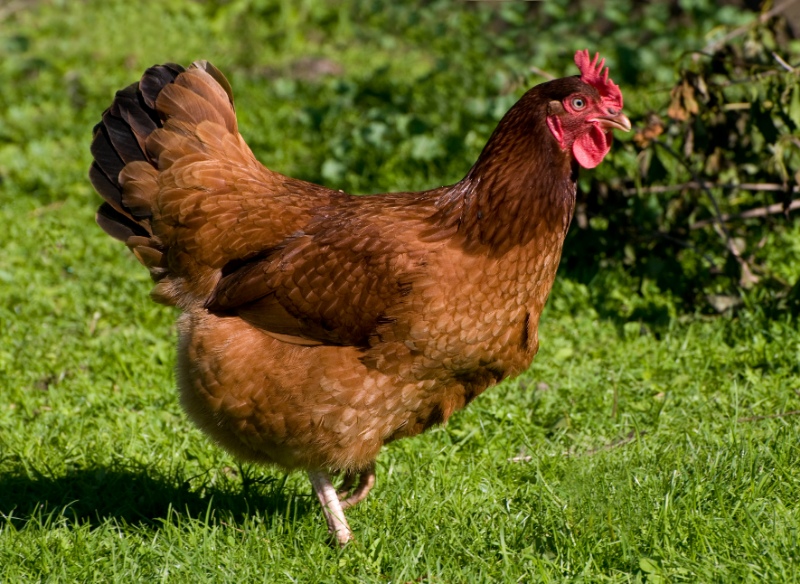
The Rhode Island Red Chicken is a sturdy and amiable poultry breed, especially due to their egg-producing abilities. They have a solid and rectangular body shape that gives them strength and size, making them chicken adaptable to various climates. With a capacity for up to 200-250 large brown eggs per year, they are renowned as one of the highest producers in terms of number resulting in an excellent choice if you’re looking for an abundant source of fresh eggs from your backyard coop.
Rhode Island Reds aren’t just known for their spectacular egg-laying feats. Still, also its docility which results in it getting along well with other chickens instead of creating unnecessary conflicts within groups or flocks so these birds won’t bring about any hostility towards each other, thus strengthening relationships between members. Adding more peace amongst companions around this chicken breed.
2. Buff Orpington Chicken
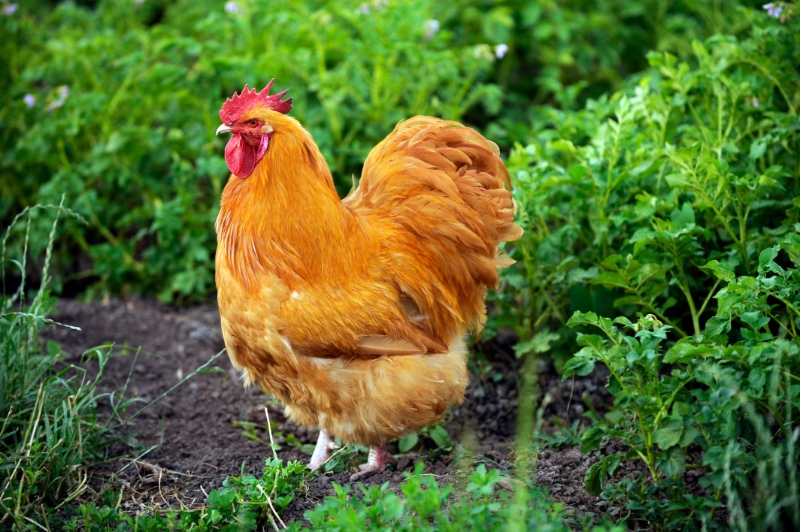
Buff Orpingtons are widely known for their temperament and robustness, making them a great choice when it comes to egg as well as meat production. Annually they can generate up to 280 big brown eggs, which is why this chicken breed is sometimes called gentle giants due to its inclination to be fond of human attention. These birds boast beautiful feathers in diverse varieties with buff feathering arguably the most attractive one yet prone to broodiness plus risks of becoming overweight if not properly cared for.
Considering their friendly nature paired along with remarkable ability to produce large amounts of brown eggs each year, Buff Orpington chickens make an ideal option for those looking forward to establishing or expanding backyard poultry coops. No wonder these creatures have become much sought-after by both families and hobbyists alike! Not only that, but also because of their charming presence combined with impressive egg layin abilities – the Buffalo will remain a beloved component of the flock at your homestead.
3. Leghorn Chicken
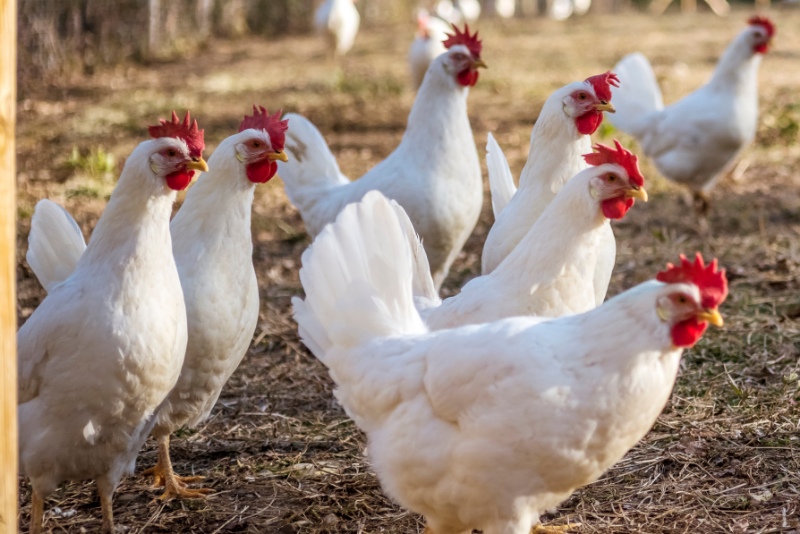
Leghorns are a popular chicken breed in your backyard coop because of their high egg production rate. This breed can lay up to 280 eggs per year, making them an excellent choice for those with reliable laying capabilities. They may not be the best pet due to their rather skittish disposition.
Leghorn chickens, although rather small, are the world’s best commercial egg producers; on average, they produce 280 eggs a year. However, they have a nervous temperament, and since they can fly most private homeowners choose not to breed them.
This breed of chicken was first developed in Livorno, Italy and comes in a rainbow of colors. Common colors include traditional white, blue, buff, barred, silver, red, light brown, and black, although there are many more color variations.
Still, they make up for it with how active and energetic these birds typically are, needing ample space when wandering outdoors or within their enclosure. Not only that, but Leghorn chickens also tolerate most climates which is beneficial should you reside somewhere cool throughout part of the season/year!
4. Brahma Chicken

The Brahma Chicken is a notable bird breed for its size, power and toughness. They can weigh from 7 to 12 pounds, lay around 120-150 eggs per year with 3 to 4 medium-sized white eggs and brown ones every week from October until May. Not only are they prolific egg layers, but also known for their superior maternal qualities as well as resilience in cold weather which makes them ideal candidates for the backyard coop system since they deliver both meat and egg production too!
Brahma chickens, one of the largest varieties around, originated in India. Their large size is seemingly increased by their loose featherings and the fact that feather coverage actually extends down the legs and over the feet as well. There are three recognized color varieties of Brahma chickens: light, dark, and buff. These variations boast different color combinations of white, black, and gold feathers and linings.
Although not good for meat, these chickens are average egg producers and incredibly hardy. They also make excellent mothers and are known for their docile temperaments.
Their pleasant disposition, combined with this versatility, ensures that these chickens make a great addition when looking for chicken breeds which offer several different benefits, such as providing meal options on top of producing large amounts of brown eggs each season.
5. Sussex Chicken
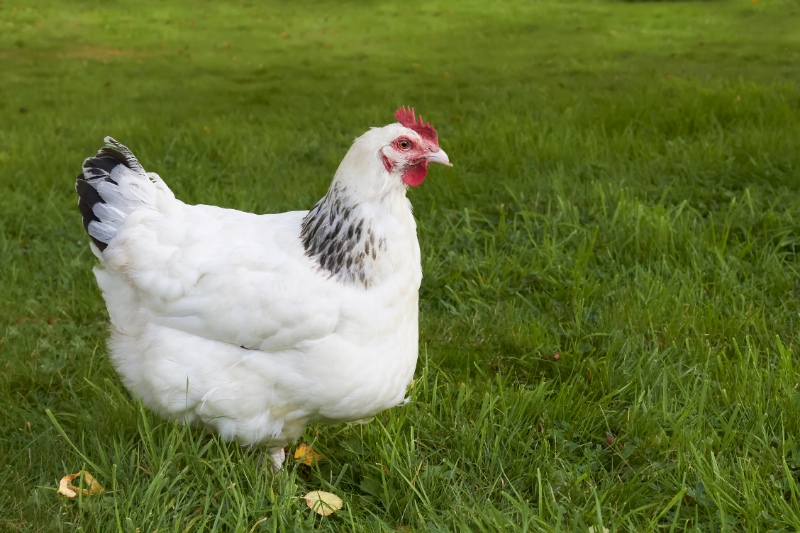
The Sussex Chicken is a popular breed with chicken keepers due to its adaptability and suitability for egg or meat production. Not only are they docile, but these chickens also lay large light brown eggs that can reach up to 300 or more per year! With various colors such as red, speckled, silver and brown available too, this makes it an ideal selection for backyard coops.
Praised by many poultry owners worldwide for their resilience to different climates and conditions. The Sussex Chickens egg laying capability has earned them many admirers amongst chicken fanciers. Besides being easy-going birds, they have excellent characteristics when it comes to productivity making them highly suitable selections even during winter season.
If you’re looking into having some feathered friends at your coop then taking into consideration the advantages offered by sussex Chickens should be strongly taken into account – from friendly demeanor to notable egg production capabilities adding one of this type will definitely bring along lots of joys within any flock group while providing impressive nutrient benefits through that lovely signature golden hued ovals!
6. Plymouth Rock Chicken
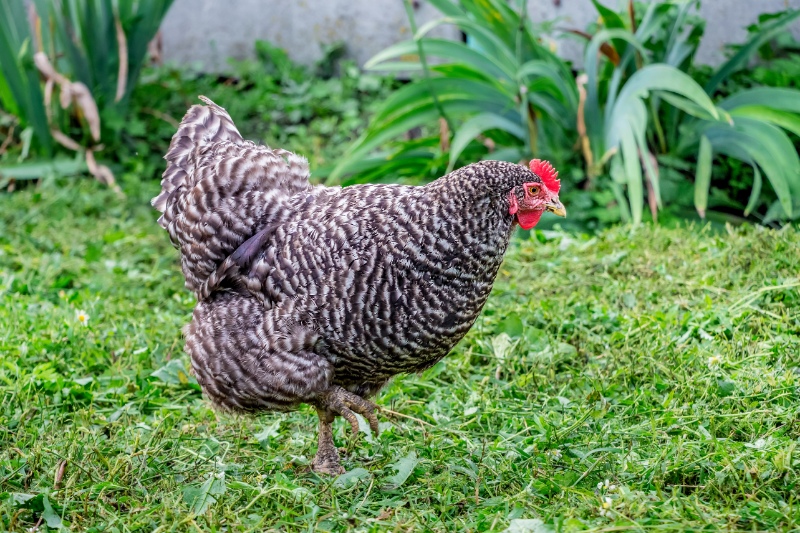
The Plymouth Rock Chicken is a popular dual-purpose breed renowned for its Barred variety and high egg and meat production. It weighs about 7lbs, laying between 4 to 5 light to medium brown eggs per yearly with an impressive capacity of up to 280 large brown ones annually. This chicken has been selectively bred specifically for its excellent egg producing qualities, which make it the perfect choice amongst chicken keepers who have backyard coops in different climates or conditions.
They are named for their unusual coloring, a black and white stippling of feathers that has a marble-like effect, but they also come in other colors. These large birds also come in buff, blue, Columbian, partridge, and variations of silver.
Apart from being suitable under varying environments, this fowl also stands out due to its peaceful personality. Making them great companions too! If you’re considering adding one into your flock then look no as these chickens bring together all that’s needed: friendliness plus versatility combined with exceptional capability when it comes down to both their meat and eggs productions – giving more reasons why many opt for the beloved Plymouth Rock Chickens!
7. Australorp Chicken
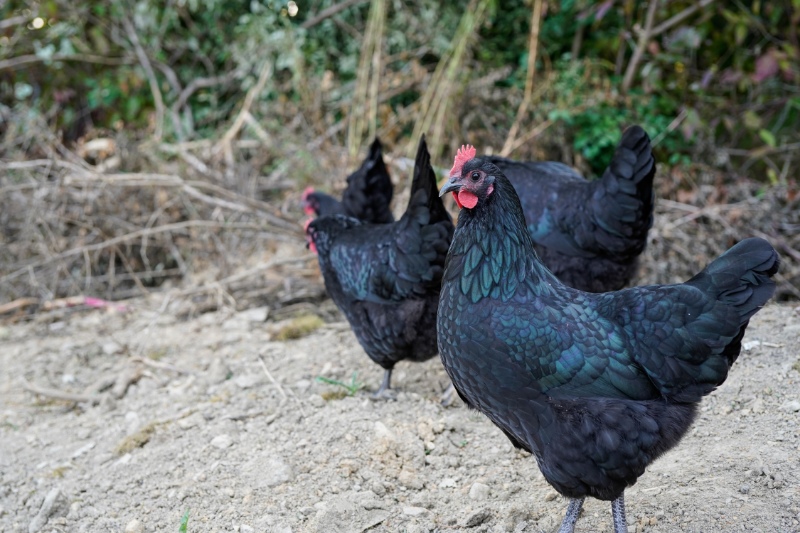
The Australorp Chicken is a widely popular breed meat bird amongst chicken keepers for its remarkable egg-producing capacity of up to 250 eggs per year. They can weigh between 6 and 11 pounds, making them suitable in terms of size for backyards or coops that owners may have. This friendly bird will eventually warm up with familiar faces around it and inclines to get treats from their owner’s hand as well.
Since the Australians are known to be quite hardy chickens, they can live comfortably regardless of climate conditions. No matter what weather comes around, they remain adapted to cope perfectly fine under such circumstances, which makes them perfect choices if you wish your backyard flock should consist of this type of poultry birds.
Lastly but not least due to these factors aforementioned plus their pleasant look combined with superb egg laying ability they make sure quickly become one favorite member when kept inside any given enclosure filled with different types of fowls people own there The ideal choice regarding productivity within hens -definitely looks like the appellation ‘Australorp Chicken’ applies.
8. Silkie Chicken
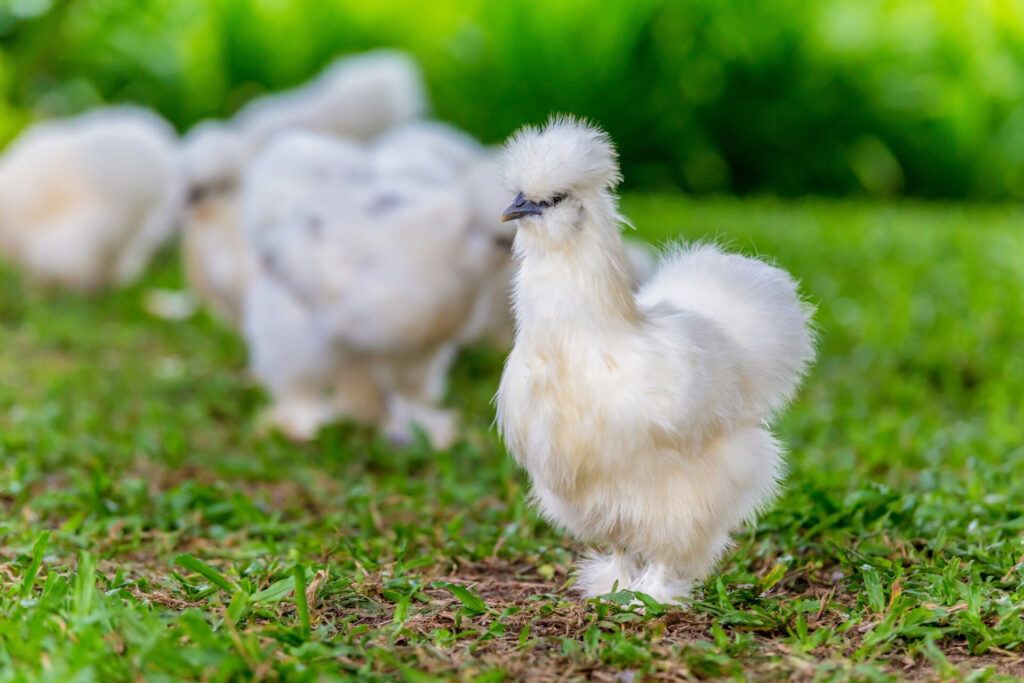
Silkie Chickens are an ancient breed that is thought to have originated in the Far East, more than likely China. They stand out for their white feathers, which feel like human hair, making them popular among decorative chickens. Though they don’t lay too many eggs yearly (approximately 100), this special type of chicken also has a gentle personality and pleasing look, two traits cherished by owners who prefer pets with style or seek animals as companions.
The disposition of Silkie Chicken’s couldn’t be any better. Friendly yet docile behavior ensures these birds will make great housemates, regardless if it’s adults or kids wanting one as a pet! Their luxurious soft plumage combined with its exquisite appearance give Silkies definite advantages over other breeds when being considered for adoption into any home environment, whether urban or rural.
9. Red Star Chicken
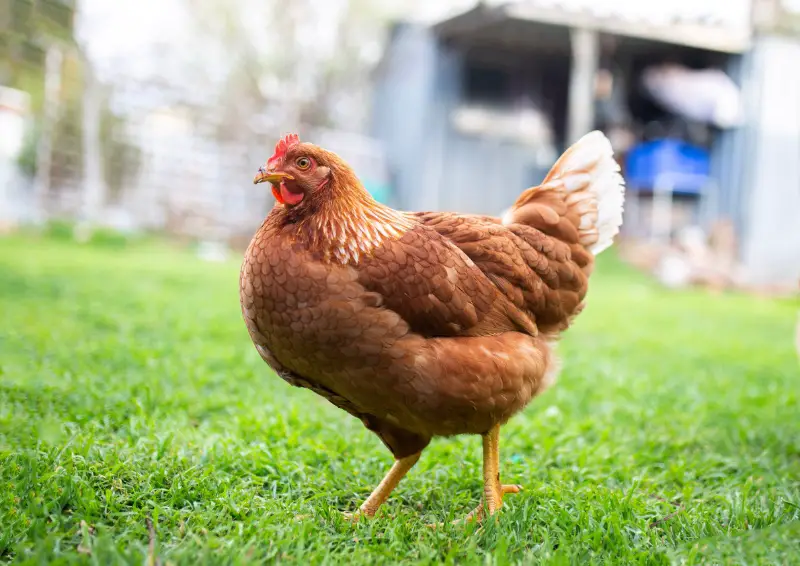
The Red Star Chicken is a top-notch poultry breed known for its remarkable egg-laying ability, with the potential to yield up to 300 eggs per year. It has a single comb, medium wattles, red ear lobes and golden legs, which sets it apart from other breeds. This particular breed is classified as a sex link. This means that there are different hues between male and female chicks.
For anyone interested in having chickens who lay great numbers of eggs in their backyard coop, the Red Star Chicken would be an ideal choice given its robustness across various climates and alluring egg production traits.
10. Maran Chicken
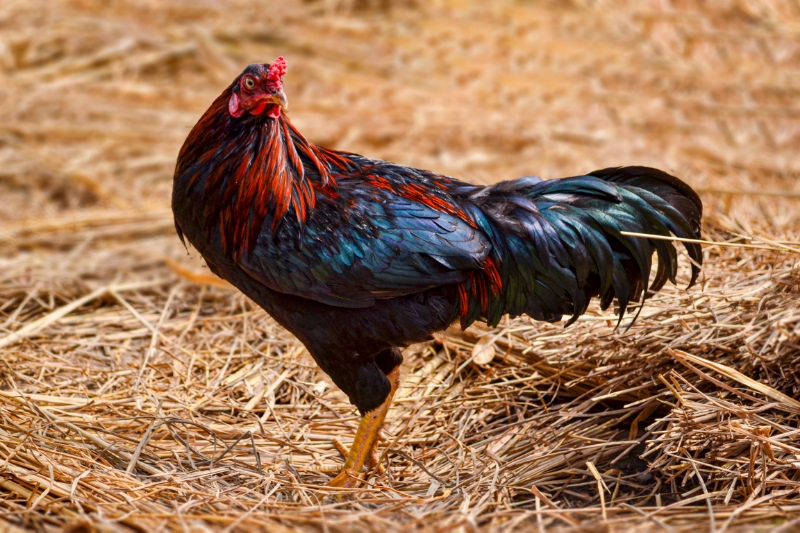
The Maran Chicken breed is known for its egg-laying capabilities, producing about 180-200 of their famous dark brown eggs annually. Not to be confused with the hens lay the rare olive green eggs, these chickens offer an array of beautiful colors from red and speckled to silver.
Their hardiness allows them to adapt well in different environments and weather conditions, which makes it a popular option among chicken keepers who want a backyard coop that features this special type of bird – friendly, reliable yet visually stunning! With up to 200 lovely brown eggs per annum laid by the Marans, they will become favorites amongst those passionate hobbyists looking for such quality poultry breeds like none other!
11. Cochin Chicken
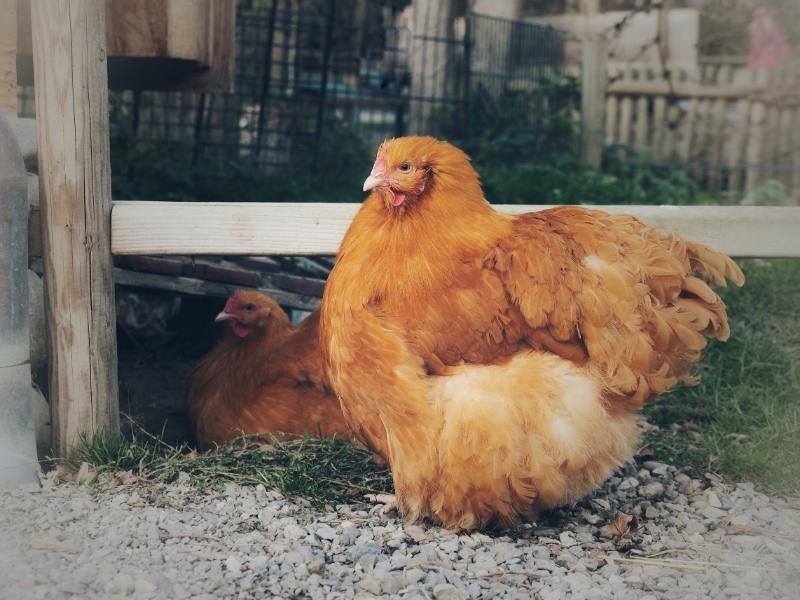
The Cochin chicken breed is believed to have originated in China and due to their substantial size, kind disposition as well as unique feathering they make an ideal choice for any domestic coop. They lay approximately 160 large brown eggs a year, which makes them popular among pet owners who admire the look of this particular bird.
Despite not having high egg-laying capabilities compared with other breeds, these chickens add character and charm to backyards everywhere with their gentle nature adding even more appeal.
12. Polish Chicken
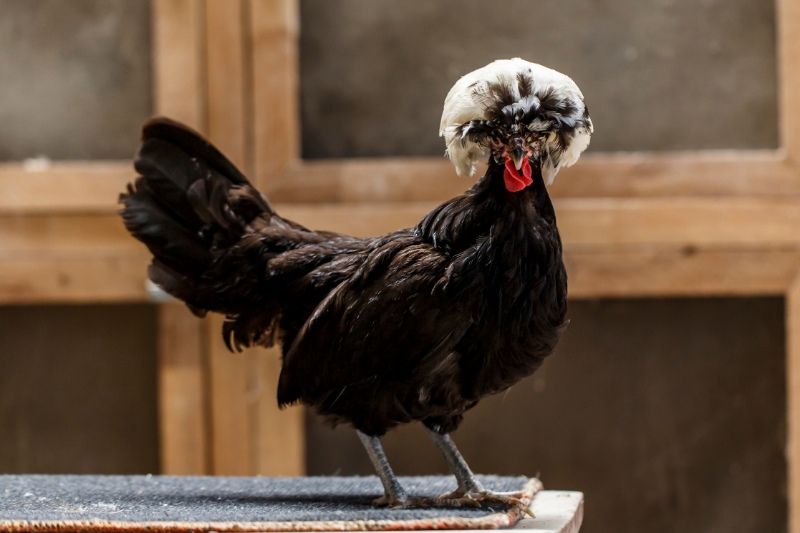
Polish chickens possess a visually striking head-crest of feathers, making them an ideal choice for those wishing to add visual appeal to their backyard coop.
Though shy at first, they can become friendly over time and provide up to 180 white eggs per annum, far less than other breeds, but still interesting given its ornamental purpose. They make intriguing pets due to their timidity and easily startled nature. It’s worth noting that this breed is primarily kept as show birds so may not be suitable if you’re looking for prolific layers or egg production.
13. New Hampshire Red Chicken
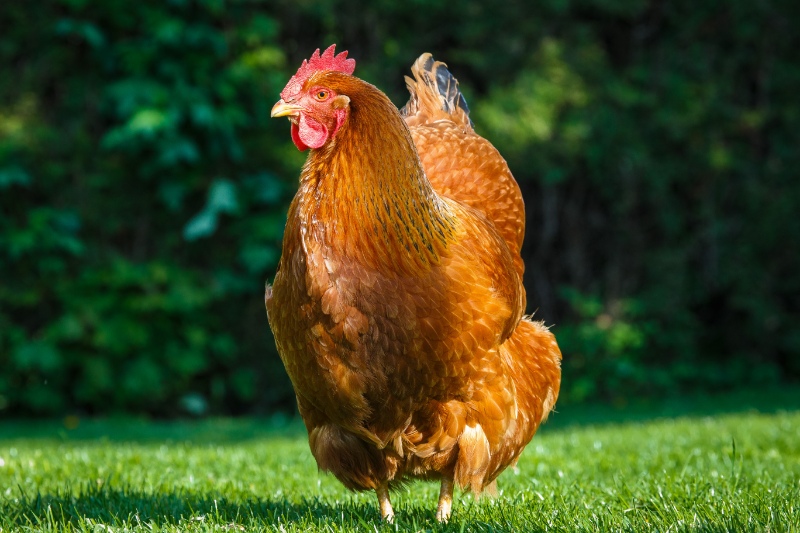
The New Hampshire Red Chicken is popular due to its egg and meat production capabilities, as well as its fast growth rate. The feathers of these chickens are reddish-brown in colour, with the maturity process taking place quickly. This breed can produce up to 200-250 large brown eggs every year and during cold times they lay even more!
Not only does this chicken have a friendly personality, but it also thrives in different climates making them an ideal choice for backyard coops that require versatile birds that provide eggs or meat throughout the seasons!
14. Belgian d’Uccle
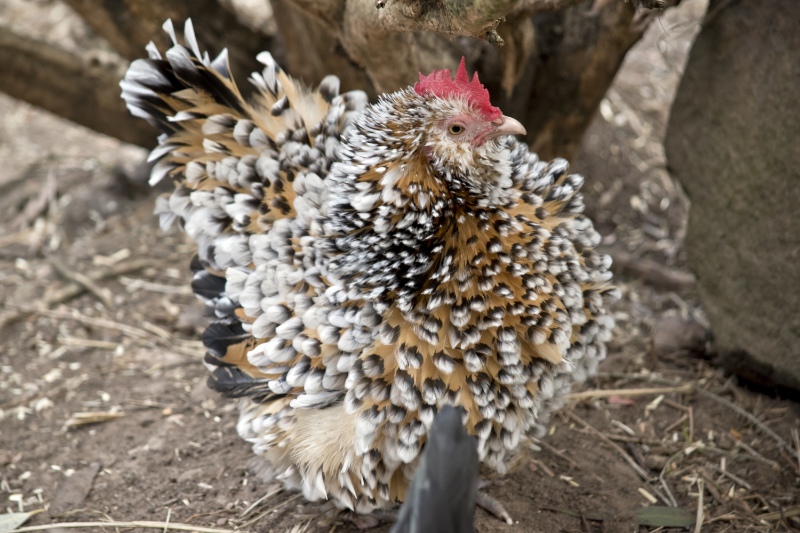
The Belgian d’Uccle is a very bantam chicken breed, suitable as an endearing companion but not for egg-laying or meat production. This chicken stands out from the crowd due to its distinct look and flighty nature, which makes it gentle enough to be kept as a pet. Its small size coupled with its interesting attributes has made this bird increasingly popular amongst those looking after pets and poultry fanciers alike.
As well as providing companionship, these birds also stand out thanks to their mild temperaments making them desirable choices among people who prefer having something unusual in their flock at home without sacrificing on docility and friendliness of character.
15. Friesian Chicken
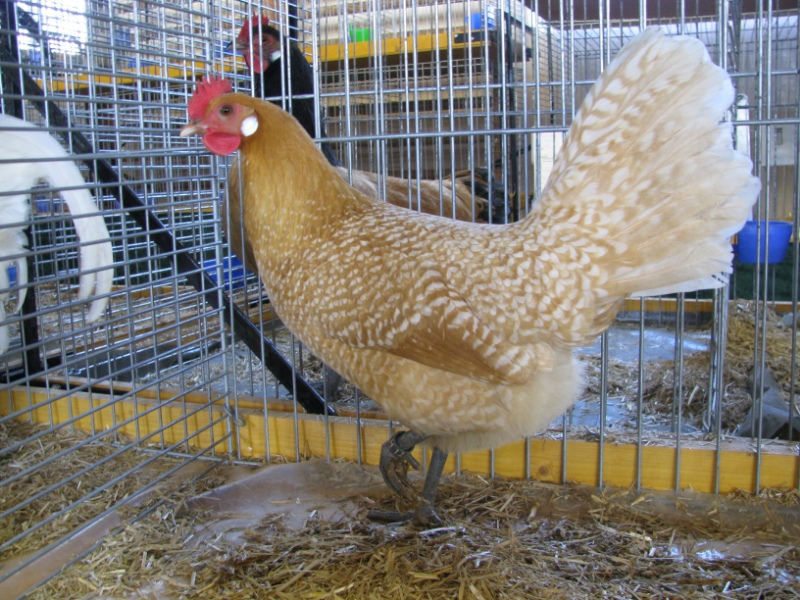
The Friesian Chicken is widely celebrated for its brilliant colors and extraordinary nesting traits. Its remarkable production of 160-180 eggs per year makes them the perfect breed both as egg layers and a source of meat.
Friedrian Chickens are sturdy enough to manage multiple environments. They can be raised in backyards or coops with no issue, making it an ideal option for farming families needing reliable poultry productivity.
16. Wyandotte Chicken
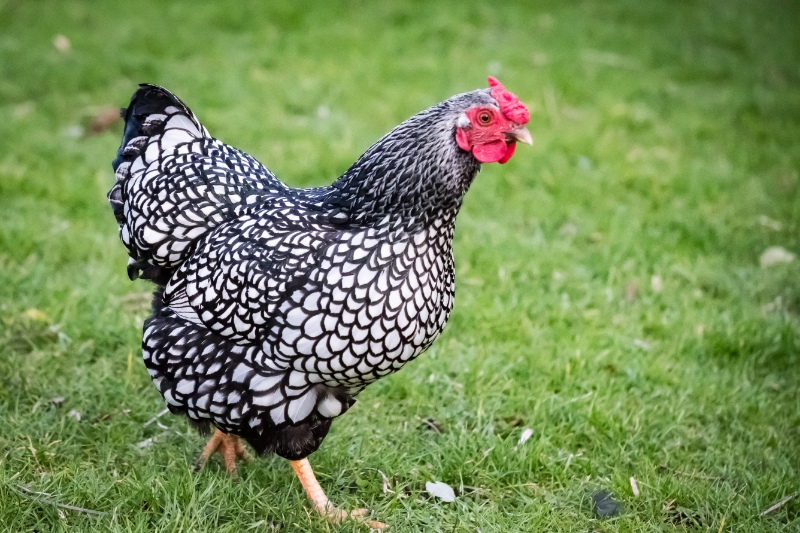
The Wyandotte Chicken breed stands out with its warmhearted and serene attitude, as well as its capacity to withstand cold temperatures. They are known for their large head, small but strong beaks, and reddish eyes. It makes them poor fliers – making them a great pick if you have a backyard coop.
Egg laying prowess combined with an eye-catching look make the Wyandotte Chickens hard to resist when looking into building your flock of chickens!
17. Barnevelder
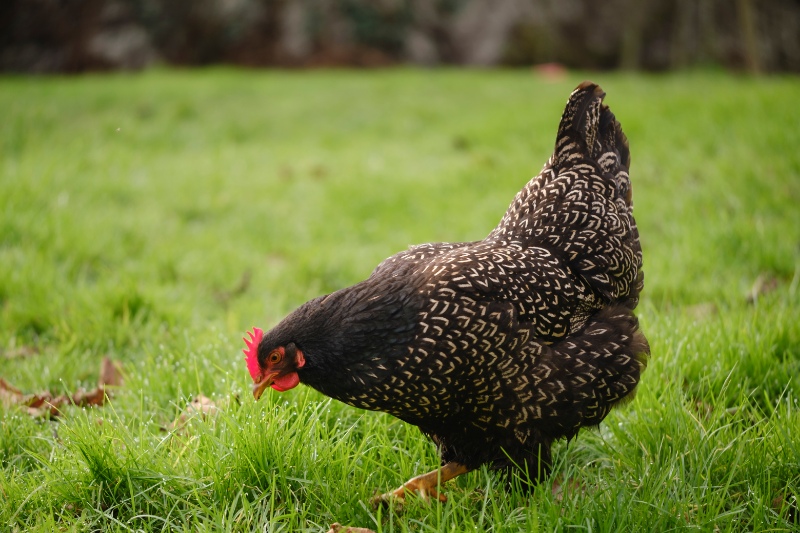
The Barnevelder is a mild-mannered and placid chicken breed native to the Netherlands. This dual purpose breed has meat and egg production capabilities, specifically laying brown eggs. It’s tranquil temperament makes it an excellent choice for those with backyards that want chickens in their flock. As these birds are friendly yet serene creatures, they make ideal companions when kept together in small coops or enclosures at home.
18. Booted Bantam
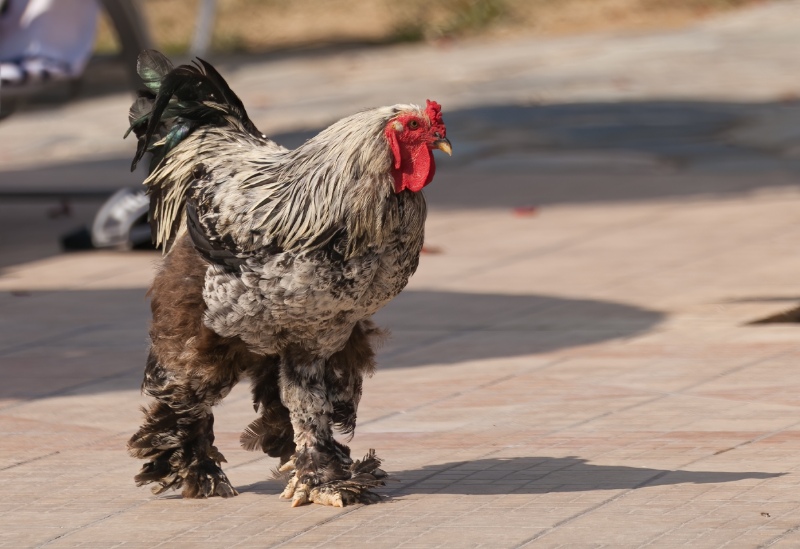
Booted Bantam chickens are a beloved poultry breed due to their egg-laying capability. These small birds lay around 150, 170 tiny eggs and display unique feathering on their legs. As such, they have become increasingly popular among pet owners and hobbyists alike for these qualities. Not only do they offer bountiful rewards with minimal space requirements, but they also have an endearing nature that makes them highly amiable companions as well.
19. Campine Chicken
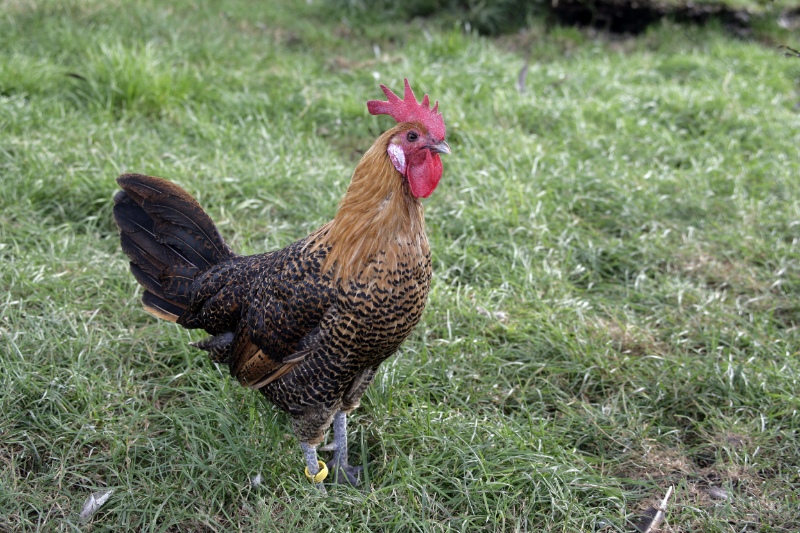
The Campine Chicken is a hardy and energetic breed, famous for its productive egg-laying capabilities with an average of 160 to 180 eggs per year. Not only are they good producers in the field of egg production, but they also make wonderful meat birds as well.
This robust bird makes for a great addition to any backyard flock due to its ability to endure different climates and environmental conditions. Thus, it’s not difficult at all when considering which type rare breed of chicken could be perfect fit for your coop!
20. Dorking Chicken
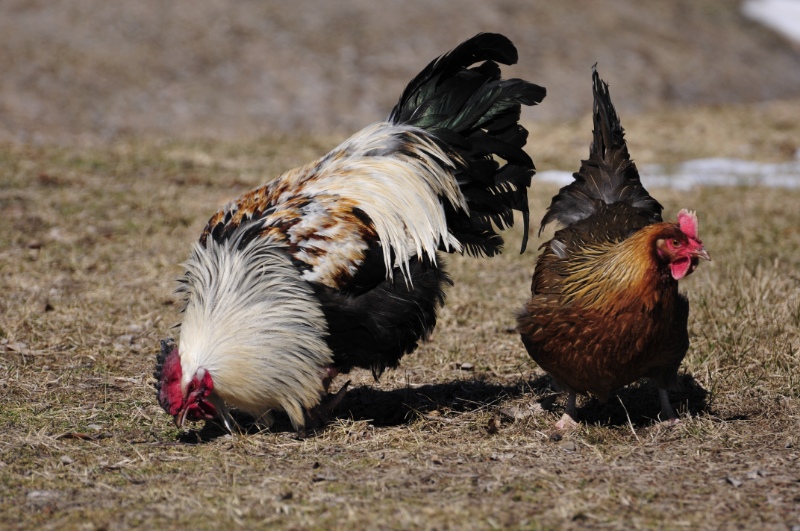
The Dorking Chicken is a breed small chickens that has been noted for its considerable egg and meat production potential, ranging in colors from red to cuckoo. These birds can lay up to 300 or more light brown eggs every year, making them an ideal choice for those looking into backyard coops due to their relaxed temperaments and general lack of fussiness.
21. Silky Chickens
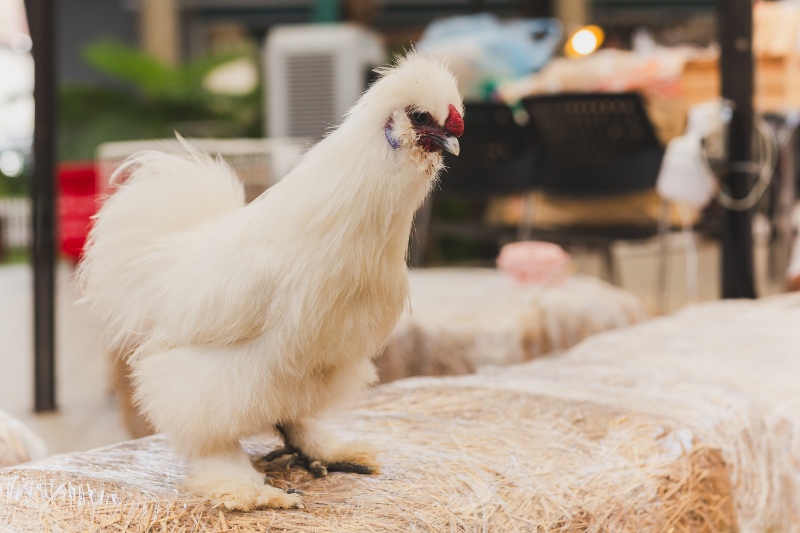
Perhaps one of the most unusual types of chickens in the world, the silky chicken boasts downy feathers that give it a fluffy, collie-like appearance. Although usually white, these birds can also come in splash varieties, blue, gray, buff, and black, and can be found bearded or non-bearded. Their skin and meat are black, a highly prized commodity in Asia, where they originated more than 800 years ago.
They are small birds, staying below 5 lbs, but they have wonderful temperaments and make great pets. Although they are not good egg layers, many farmers keep them as broodies to care for baby chickens.
22. Frizzle Chickens
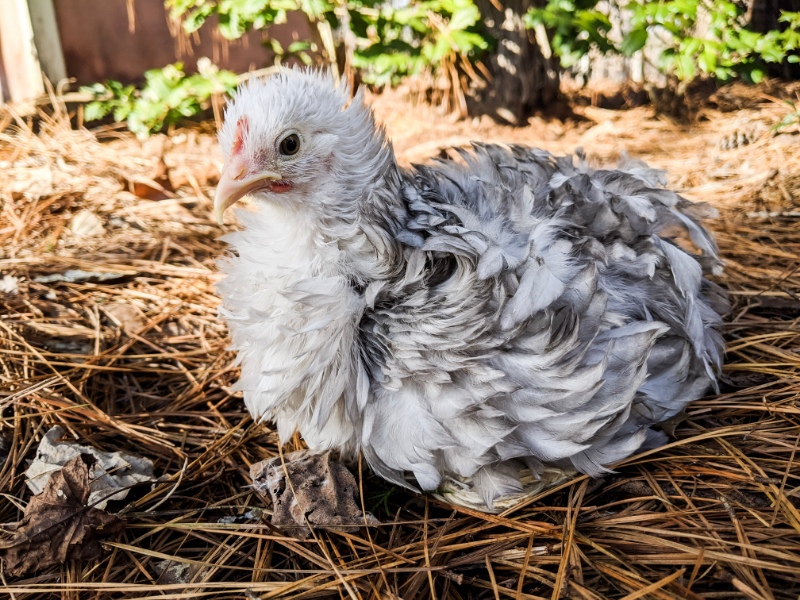
As the name suggests, frizzle chickens are recognized by their unkempt and curling feathers. Typically, any breed of chicken could have specimens that qualify for frizzle chickens, depending on their plumage. The UK, however, has declared frizzle chickens a distinct breed.
According to several records, they originated in Southeast Asia over 300 years ago. Although they are not the best table birds, they are decent egg producers. Most people keep them only for show, though.
23. Araucana Chickens
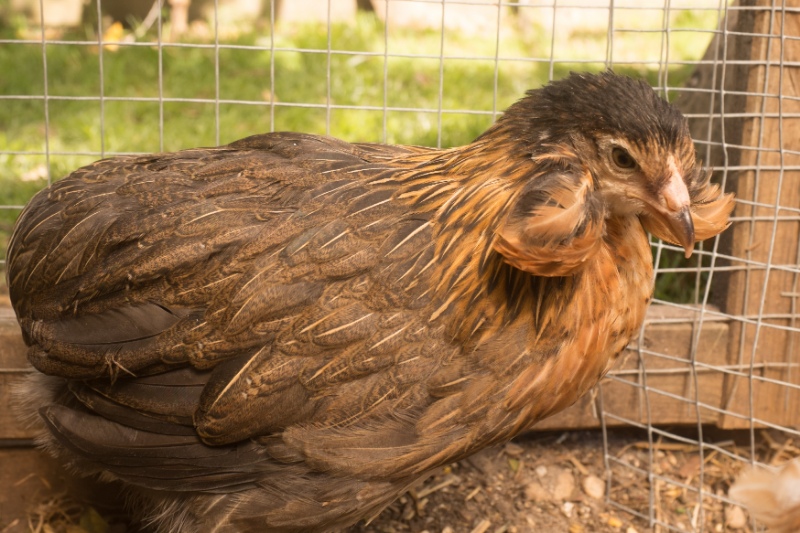
Araucana chickens are an intriguing breed, to be sure. They have two incredibly striking features that set them apart from other chickens. First, they have little curling tufts of feathers that grow from near their ears, giving the impression of an old west handlebar mustache. More notable, however, is that this is one of the rare breeds that actually lays colored eggs—blue ones, to be precise.
The modern breed is from Chile and neighboring regions, originally bred and kept by Araucanian Indians. They are still bred for their eggs and are quite reliable as egg layers, although some genetic issues result in death before hatching.
See Related: Chicken Health
Understanding Chicken Breed Categories
When choosing the right chicken breed for a backyard coop or farm, it is important to understand and consider separate breed and their unique characteristics. Chicken breeds are usually separated into four main categories: Egg-laying breeds, meat producing breeds, dual-purpose breeds as well as ornamental varieties.
Focusing on egg production will ensure maximum profitability and efficiency, making Rhode Island Red and Leghorn chickens some of the top choices. In terms of meat-producing capabilities, Cornish Crosses Jerseys Giants could be an option, while Black Sex Link can both produce eggs and meat if such duality was desired by poultry farmers/owners alike!
On another note, those who may want something nice looking would appreciate having Silkies & Frizzles. These ornamental birds have been selectively bred so that they could not only stand out from other more traditional types but also make them attractive pets to many owners!
Overall there’s plenty available when considering what kind of chicken would fit one’s needs best – thus making sure you select the perfect chicken breed accordingly should always depend on whatever purpose you hope your feathered friend(s) might serve afterwards!
Egg-Laying Breeds
Backyard coops often choose egg-laying breeds for their excellent output of eggs. These chickens are a great choice if you want to maximize your yield and get fresh eggs in abundance, with some notable varieties including Leghorn, Plymouth Rock or Ameraucana.
The White Leghorn can lay around fifty pale blue eggs and 300 large white eggs during its first year alone! Rhode Island Red hens and Golden Comets as well as Goldline Sussex breeders also have exceptional production rates when it comes to laying eggs every day.
Meat-Producing Breeds
Chickens that are raised for their meat production tend to be bigger and grow faster than other breeds of chicken. Popular types chosen for this purpose include the Cornish Cross, Jersey Giant, and Brahma varieties due to their large size as well as speedy growth rate. This makes them desirable selections by those who want to raise chickens mainly for producing meat products.
Various other breeds have also been identified which are appropriate when aiming towards the dual purpose hen creating a plentiful amount of poultry-based sustenance. These differ from common laying hens in terms of physicality and speed at which they mature, yet still share the trait being reared chiefly with an intention set on harvesting lots of succulent flesh.
Dual-Purpose Breeds
Dual-purpose chicken breeds are a great choice for any backyard coop. These breeds produce eggs and meat, making them desirable for many reasons. Varieties such as Rhode Island Red, Plymouth Rock, Australorp or Orpington are renowned amongst chicken keepers due to their robustness while also having the capacity of being suitable table birds with a bountiful egg yield each year. These dual purpose chickens can be excellent all round choices when looking into raising fowl in your homestead!
Ornamental Breeds
Ornamental chicken breeds are popularly kept for both aesthetic and companion purposes. They bring unique features to the backyard coop, such as feathery feet, crests or other decorations that set them apart from standard varieties. Also known for their gentle demeanors, these breeds make great pets or show animals.
Some examples include Belgian d’Uccle Chickens, Booted Bantams, Campine Chickens and Dorking Fowls. Perhaps the Wyandotte variety is the most iconic example of this type, an unmistakable addition to any fenced area due to its striking design.
Factors to Consider When Choosing a Chicken Breed
When choosing a type of chicken, numerous elements exist, such as the climate adaptation potential and area requirements for each breed. Before making any decisions, you should ensure you know which breeds would do best in your particular environment. Differentiating between egg production, meat production, or ornamental chickens is important when deciding on the most suitable one for yourself. The purpose behind raising them can play an essential role too! Ultimately it’s down to preference and what works best about space constraints and other variables related to individual needs.
Climate Adaptability
Understanding climate adaptability is key when selecting the perfect chicken breed for your backyard coop. For example, breeds such as Australorps and Speckled Sussex are well-known to be cold hardy, which makes them great options in colder climates. On the other hand, Leghorns prefer warmer weather but can still tolerate cooler temperatures too. Knowing these different traits of diverse breeds will aid you in deciding which type of hen would work best in their habitat.
Space Requirements
When selecting the right breed for your coop, it is essential to consider their space requirements. Breeds like Jersey Giant and Cochin occupy more room than a Bantam or Serama. Adequate living quarters are critical for chickens to be content and healthy while avoiding overcrowding of the pen. It will also decide how many poultry you can house inside – bigger breeds requiring ample space, whereas smaller ones need considerably less space.
Purpose of Raising Chickens
It is important to consider the purpose of raising chickens, as different breeds are suitable for various purposes. The Rhode Island Red and Leghorn varieties stand out with their exceptional egg laying abilities. Meanwhile, Cornish Crosses and Jersey Giants make great meat birds.
Ornamental types like Silkies or Frizzles have been bred specifically for their unique appearance, popular among pet owners or hobbyists alike. To select the best breed according to your needs and preferences, it is key that you understand what type of chicken keeping suits you best – be it eggs production, meat production or ornamental feathery friends!
Summary
In the end, finding a perfect chicken breed means being aware of different types of chickens and thinking about environment suitability, space availability as well as purpose for raising them. To make an educated choice that best fits your individual needs and wants while taking into account all advantages specific breeds bring along with them is key when selecting the optimal breed to populate your backyard coop or farm. Good luck!
Frequently Asked Questions
What are the 3 types of chicken?
There are many types of chickens, and these can typically be classified into three sections: egg-producing breeds, meat-oriented strains, and dual-purpose varieties. The former is best for high amounts of eggs. The second produces copious quantities of flesh. At the same time, the latter provides an ideal balance between creating eggs and yielding a respectable amount of poultry products.
What is the most common breed of chicken?
The Rhode Island Red is a dual-purpose breed, used both for meat and egg production. It’s popularly known as it stands out with its rust-colored plumage. As well as being an attractive bird, this particular kind of chicken lays large brown eggs, making them ideal for backyard hobbyists who want to farm their poultry!
What are the 4 classes of chickens?
There are four primary breeds for chickens: American, Asiatic, Continental, and Mediterranean. Every variety has distinct qualities that set them apart from each other. For instance, the docile nature of Americans while Asiatics stand out in strength. Egg production is excellent with continents, while those bred in a Mediterranean region lead when discussing meat yield.
What are the four main categories of chicken breeds?
Egg-laying, meat-producing, and dual-purpose breeds offer something different to the chicken world. Egg production is a prevalent quality of certain birds, while some ornamental breed types are admired for their colorful plumage. Each breed offers distinct qualities that contribute to poultry keeping in unique ways.
Which chicken breed is known for its exceptional egg-laying abilities?
The Rhode Island Red is widely praised for its exceptional egg-laying capacity, with a potential to produce around 200-250 eggs each year. This breed is one of the most proficient layers among poultry breeds.
Related Resources